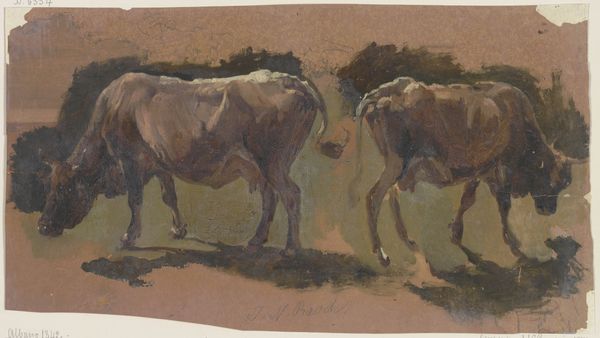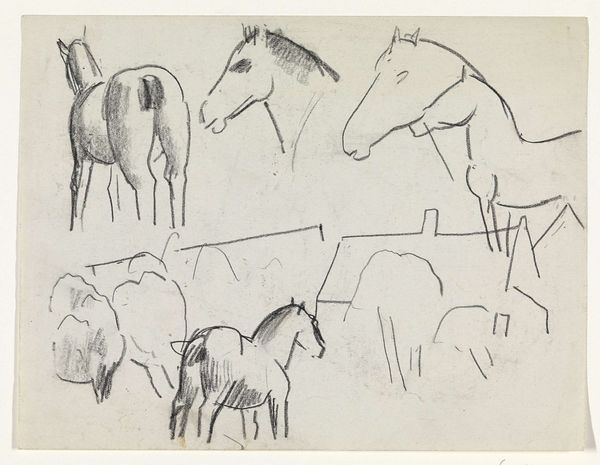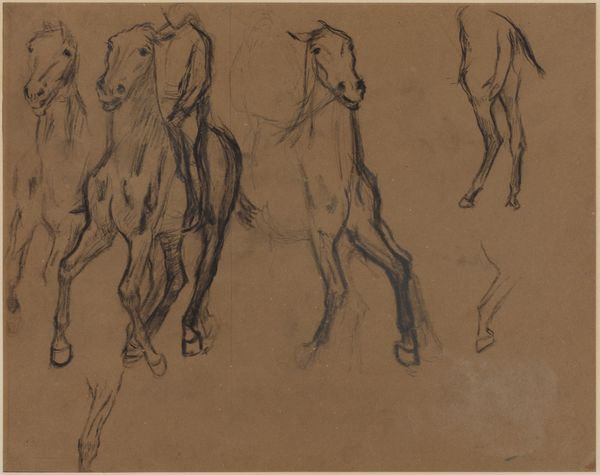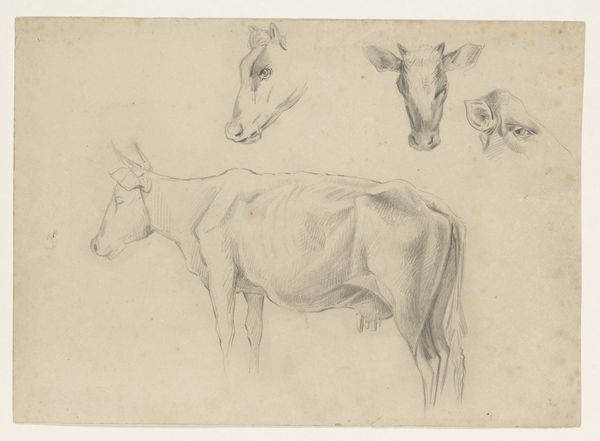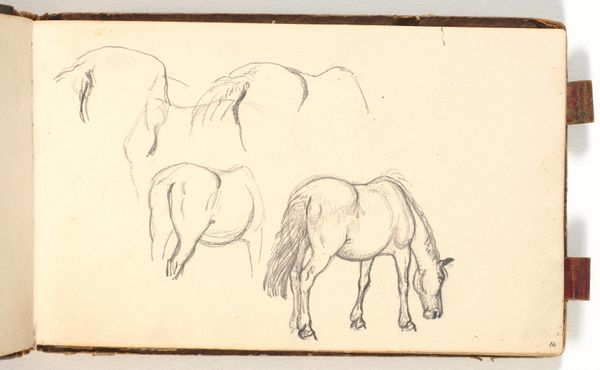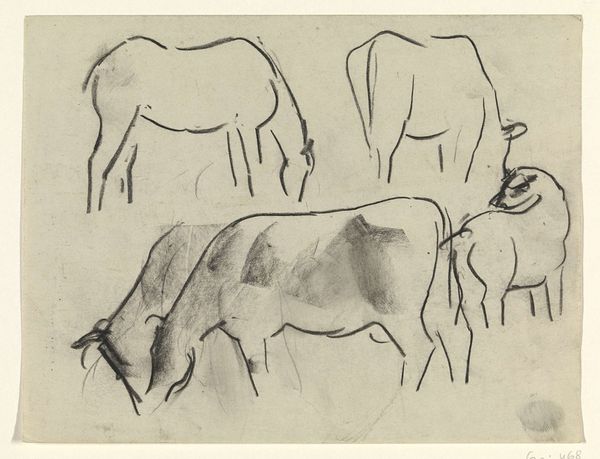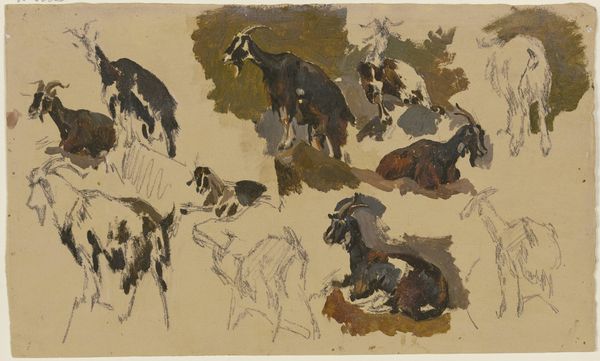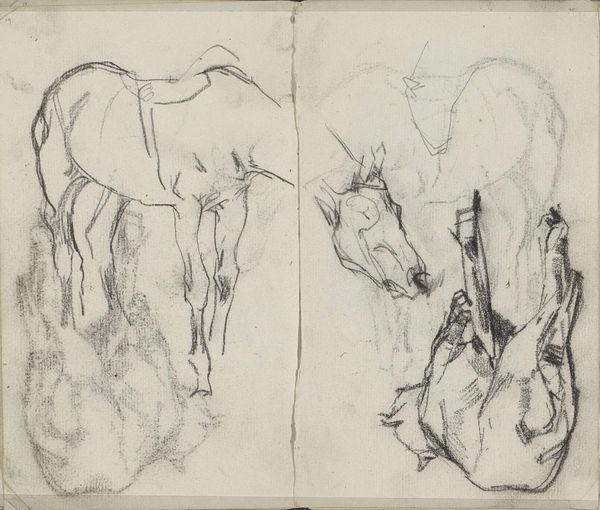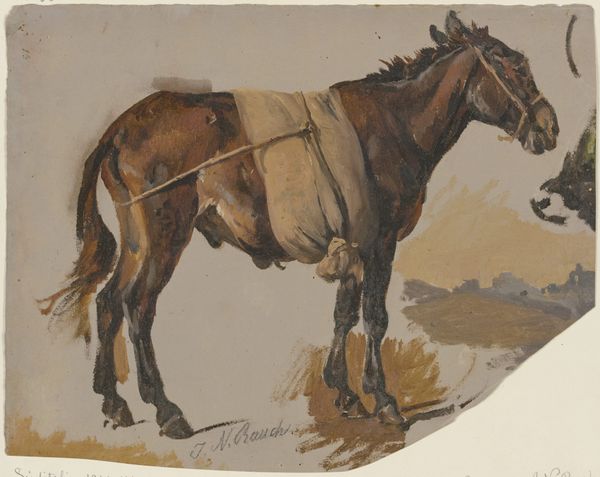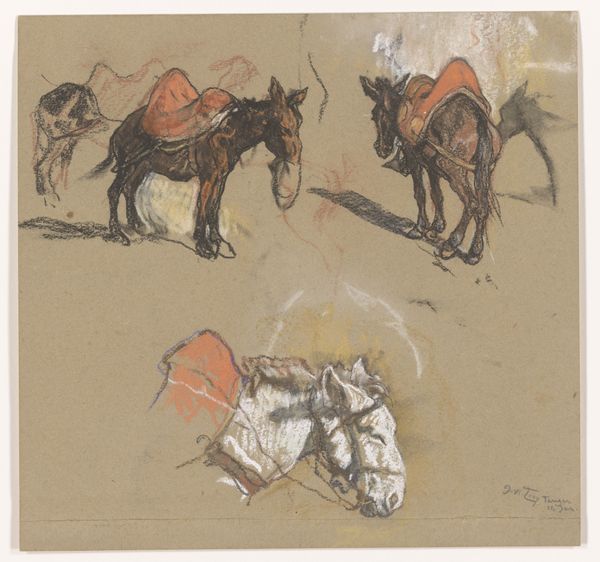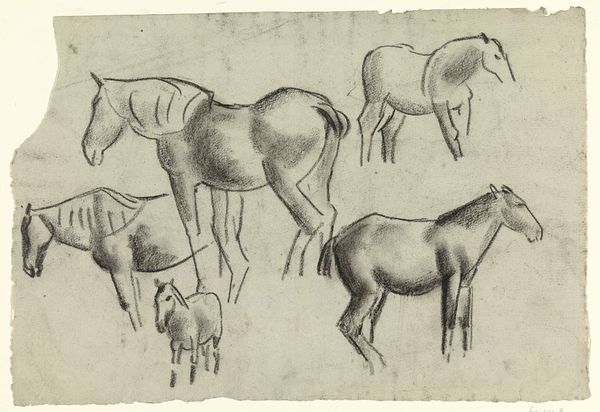
drawing, oil, paper, watercolor
#
drawing
#
water colours
#
oil
#
landscape
#
paper
#
watercolor
#
genre-painting
#
watercolor
#
realism
Copyright: Public Domain
Curator: Looking at this work by Johann Nepomuk Rauch, created between 1841 and 1847 and titled "Five Mules," the first thing that strikes me is its muted, earthy palette. It’s predominantly brown and ochre, evoking a sense of groundedness. Editor: The almost casual arrangement of these animals makes them seem like studies rather than a complete picture. The foreground, middle ground, and background blur and overlap which causes spatial ambiguity, and yet that doesn't make it incomplete in any way. Mules have historically borne the burdens of human labor. I'd say this makes it inherently political. Curator: Interesting point! I see it differently. What I’m immediately drawn to is the textural variation achieved through the artist’s deft handling of watercolor and oil on paper. See how the paint application varies, lending a different feel to each animal? Some areas are almost transparent, allowing the paper's texture to peek through, while others possess a more substantial impasto, giving those figures a tactile quality. The composition of the image is carefully calculated. Look at the diagonal organization, anchored at the upper left by the forward-facing mule, creating visual tension. Editor: Yes, it’s skillfully rendered but this work comes from a very particular moment in time, just prior to the 1848 revolutions, which had immense consequences across Europe. Peasant labor, and particularly that of animals, fueled society. Consider also, Rauch’s choice of medium—drawing—often a preliminary act, not considered 'high' art like large-scale history painting, reinforces an acknowledgement of the working class. There are traces of preliminary marks here—suggesting the incomplete labor behind its making—visible to any contemporary viewer. Curator: Perhaps the understated palette is an indication of Rauch’s concern with a new kind of realism – he chooses these hues intentionally for visual impact. It does strike me as less a heroic narrative, and more an attempt at directly conveying aspects of material reality. Editor: To dismiss this scene as 'simple realism', one cannot turn away from who is being represented. It acknowledges their role in maintaining a social order that benefits some far more than others. Rauch, perhaps unconsciously, gives them their due in a setting, that appears unfinished; just like the labor of its subjects which perpetually renews and recreates itself. Curator: It has been insightful to investigate Rauch’s methods here. Focusing on the interplay of forms and the use of tonality to build mass and spatial depth allowed us to see what Rauch seems to suggest. Editor: It's more urgent now than ever to acknowledge that artists engage, either consciously or unconsciously, in perpetuating the inequalities around us. I appreciate having been given the opportunity to bring the plight of laborers into sharper focus.
Comments
No comments
Be the first to comment and join the conversation on the ultimate creative platform.
